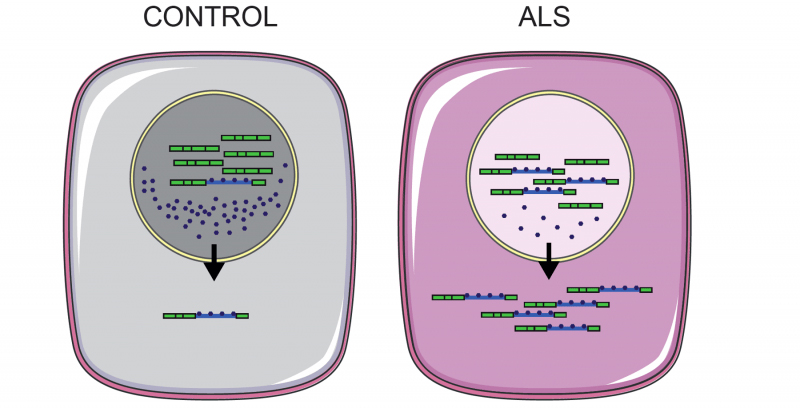
Posted on 08/10/2021 7:15:57 AM PDT by Red Badger
Amyotrophic lateral sclerosis (ALS), often known as motor neurone disease, slowly kills off nerve cells in the brain and spinal cord, causing paralysis and eventually death.
Right now, there's no known cure – but we might have just gotten closer to finding one.
In a new study, scientists were able to reverse one of the biological abnormalities that ALS introduces in cells. It's important to note this has only been achieved for one form of the disease so far, and only in lab samples, rather than in actual human beings.
Even with those caveats, though, it's a significant step forward in understanding how we might tackle the neurodegeneration seen in ALS cases, and gives new hope that motor neurone disease can one day be beaten.
"Demonstrating proof-of-concept for how a chemical can reverse one of the key hallmarks of ALS is incredibly exciting," says neuroscientist Jasmine Harley from the Francis Crick Institute in the UK.
"We showed this worked on three key RNA binding proteins, which is important as it suggests it could work on other disease phenotypes too."
These RNA binding proteins, which help regulate RNA, get stuck in the wrong place in most people with ALS. They find their way out of the motor neuron nucleus where they should be, into the surrounding cytoplasm where they shouldn't be.
The team was able to reverse this in human cell samples taken from patients with ALS. They did it by blocking an enzyme called VCP, which suggests that, in some motor neurone disease cases, this enzyme is becoming mutated and overactive.
When the enzyme was blocked, the distribution of RNA binding proteins between the nucleus and cytoplasm returned to normal.
Encouragingly, the drug used as an inhibitor is also being tested as part of phase II cancer trials, which could help speed up its development and availability – if it is determined that the same treatment can also help those with amyotrophic lateral sclerosis.
In a second study from the same researchers, the team discovered other new insights about ALS. They found over 100 types of RNA fragments, called intron-retaining transcripts, which can also move from the cell nucleus to the cytoplasm in ALS cases.

als compare (Giulia Tyzack)
Above: Intron retaining transcripts (green) might be carrying RNA binding proteins (blue) to the cytoplasm more in cells with ALS.
Not only was that much more than expected, but the researchers found these introns have sequences thought to bind to the RNA binding proteins. The team suspects these sequences are what's drawing RNA binding proteins out into the cytoplasm, though more research is going to be required to confirm it.
"To imagine what's going on here we can consider watching a movie at the cinema," says neuroscientist Jacob Neeves.
"Typically, we don't expect to see adverts throughout the film, but, if something goes wrong these ads might start cropping up at odd and unexpected points. These retained introns are a little bit like these abnormal ad breaks."
Around 10 percent of ALS cases are familial, and only around 1-2 percent of these have the mutated VCP enzyme. That's a small target, and it's not yet certain that this technique will work in actual patients.
However, both studies offer new hope that by understanding more about motor neurone disease we can eventually figure out ways of undoing some of the damage that it causes to the brain and nervous system.
ALS is relatively rare – it affects about 2-3 people per 100,000 in Europe each year – but the effects can be devastating, and scientists aren't sure exactly how it gets started or how to stop it. These new studies should help find out, but there's still a lot of work ahead.
"More research is needed to investigate this further," says Harley. "We need to see if this might reverse other pathological hallmarks of ALS and also, in other ALS disease models."
The research has been published in Brain Communications and Brain.
This is wonderful news! I hope it pans out when (if) it goes to clinical work. What a blessing it would be!
Disclaimer: Opinions posted on Free Republic are those of the individual posters and do not necessarily represent the opinion of Free Republic or its management. All materials posted herein are protected by copyright law and the exemption for fair use of copyrighted works.